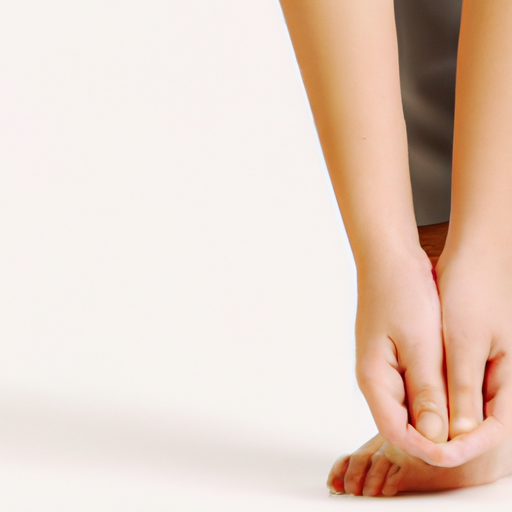Understanding Clammy Feet And Hands
Clammy feet and hands can be an uncomfortable and often embarrassing problem.
Have you ever found yourself in a situation where your palms are so sweaty that shaking hands feels like a nightmare?
Or perhaps you’re slipping in your own shoes because of wet feet?
You’re not alone.
Many people experience these symptoms daily, and they can be attributed to a condition known as hyperhidrosis.
What Are Clammy Feet And Hands?
Clammy feet and hands are characterized by excessive moisture on the skin, making it feel wet or damp.
This can happen even when you’re not doing any physical activity.
The underlying cause is usually overactive sweat glands, which produce more sweat than necessary to regulate body temperature.
Imagine sitting in an air-conditioned room, yet still feeling like you’ve just run a marathon – that’s what life with clammy feet and hands often feels like.
For many, this isn’t just a mild inconvenience but a significant issue affecting their personal and professional lives.
The Symptoms To Watch Out For
Recognizing the symptoms of clammy feet and hands is crucial for proper management.
Here are some common signs:
– Persistent wetness on the palms and soles
– Cold or moist skin
– Frequent foot odor due to excess moisture
– Difficulty gripping objects or writing due to slippery hands
These symptoms can fluctuate in intensity but tend to worsen during stress, anxiety, or heat exposure.
Interestingly, even thinking about sweating can trigger the glands into action!
The Causes Behind Clammy Feet And Hands
Understanding what causes clammy feet and hands helps in finding effective treatments.
So let’s dive deep into some common causes.
Hyperhidrosis: The Main Culprit
The primary cause of clammy feet and hands is hyperhidrosis.
This condition affects around 5% of the population globally.
In people with hyperhidrosis, overactive sweat glands produce sweat far beyond what’s necessary for cooling down the body.
There are two types of hyperhidrosis:
– Primary Hyperhidrosis: This type has no identifiable medical cause and usually starts during childhood or adolescence. It often runs in families.
– Secondary Hyperhidrosis: This type results from other medical conditions such as diabetes, thyroid problems, infections, or medication side effects.
Emotional Triggers
Emotions play a significant role in triggering sweaty palms and soles.
Situations causing stress or anxiety can activate your body’s fight-or-flight response.
This reaction stimulates your sweat glands to prepare you for potential danger – even if that “danger” is merely public speaking!
Environmental Factors
High temperatures naturally make everyone sweat more as part of our body’s cooling process.
However, for those with overactive sweat glands, even mildly warm environments can lead to excessive sweating.
Managing Clammy Feet And Hands
Thankfully, there are several ways to manage clammy feet and hands effectively.
From lifestyle changes to medical treatments – let’s explore them all.
Lifestyle Adjustments
Small changes in daily habits can significantly reduce symptoms:
– Wear Breathable Fabrics: Choose cotton socks and gloves rather than synthetic materials that trap moisture.
– Stay Hydrated: Drinking plenty of water helps regulate body temperature more efficiently.
– Reduce Stress: Practice mindfulness techniques such as meditation or yoga to manage stress levels better.
Imagine swapping out your synthetic socks for breathable cotton ones – it might sound simple but could make a world of difference!
Over-The-Counter Solutions
There are various over-the-counter products designed specifically for reducing perspiration:
– Antiperspirants: These contain aluminum chloride which blocks sweat ducts temporarily.
Applying them before bed allows maximum absorption overnight when sweating is minimal.
Think about using antiperspirant not just underarms but also on palms & soles!
Medical Treatments For Severe Cases
If lifestyle changes aren’t enough then consulting healthcare professional becomes essential.
They might recommend one following advanced treatments:
Iontophoresis Therapy
A non-invasive treatment involves passing mild electrical current through water while affected area submerged.
It’s painless yet highly effective most patients see significant improvement after few sessions.
Imagine relaxing spa-like treatment actually helping combat excessive sweating!
Botox Injections
Botulinum toxin injections block nerve signals responsible producing sweat thus providing relief up six months each session.
Yes needles might seem daunting result worth it many find life-changing therapy!
Prescription Medications
Certain oral medications help control sweating either by blocking chemicals stimulating nerves producing sweat regulating overall bodily functions leading reduced perspiration levels long-term basis
Always consult doctor before starting any medication ensure suitability individual requirements needs!
Surgical Options (ETS) Endoscopic thoracic sympathectomy surgical option considered last resort cases severe unresponsive other treatments involves cutting nerves causing excessive sweating although effective carries risks potential side effects hence thorough discussion surgeon essential prior decision-making process!

